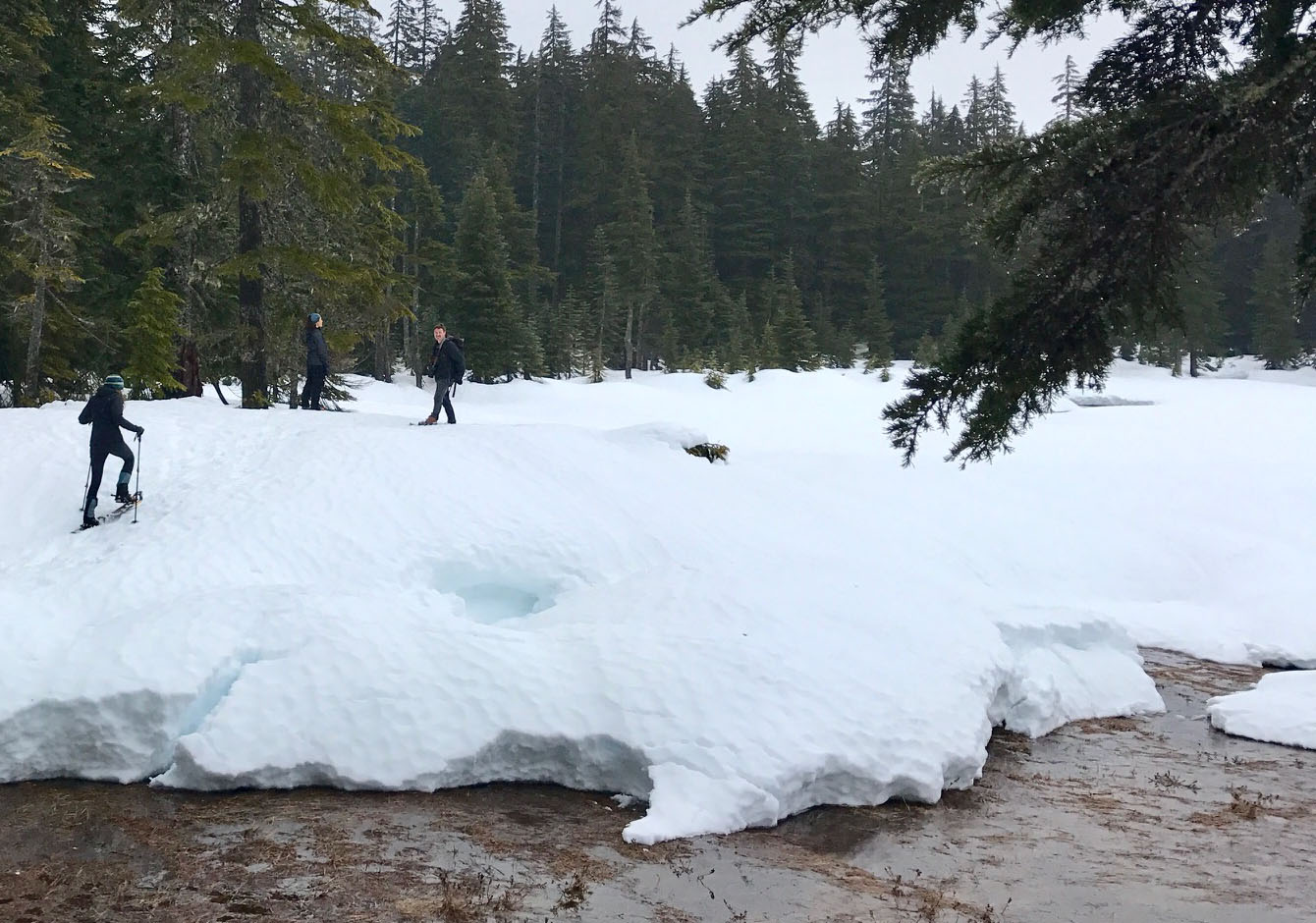By Deborah Kidd, Marketing Manager
As we drove up the mountain, our prospects did not look good. Unyielding gray clouds draped the peaks ahead, and muddy slush crunched beneath our tires. Glancing back at our gear, I began to doubt whether we’d find deep drifts to do our snowshoes justice.
A lucky connection sent us up a chair lift, and the hike down offered worthy accumulation. A knee- or hip-deep punch through the snow every now and then justified our excursion — and added a bit of adventure. But even in the snow, this February afternoon felt unseasonably warm, and we heralded the die-hard handful of skiers and snowboarders who shared the mountain. Conditions were distinctly unideal.
While snow-sport enthusiasts monitor forecasts by the week and Washington winter conditions can vary throughout a given season, overall trends are tracking warmer. That means less snowpack and shorter seasons for Washington winter recreation, according to an assessment by UW Climate Impacts Group.
Our environment will take the hit alongside associated businesses — from ski resorts and state parks to gear retailers and mountainside services that rely on seasonal traffic. Winter recreation brings $1.7 billion annually to Washington’s economy. By 2050, the Pacific Northwest could lose nearly 50 percent of historic snow accumulation. This is not only a heartbreak for those of us searching for snow in our leisure time: The people, business, communities and state agencies that rely upon winter recreation face far-more daunting risks.
As world-class athletes braved gusts and windchill at the Winter Olympics this weekend, viewers cozied up to welcome the crisp conditions of South Korea in their living rooms and revel in the singular sound of a skate slicing the ice. Temperatures dropped dramatically in Pyeongchang, but abundant snow and consistent chill are no longer norms in other go-to winter locales. The New York Times just reported that by midcentury, nine former Winter Olympics sites may not be reliably cold enough for the Games.
Athletes are adding powerful voices to climate change activism. Pro snowboarder Jeremy Jones founded Protect Our Winters after low-snow years consistently closed resorts. With their bottom lines at stake and the winter wonderlands that fuel their businesses in jeopardy, Washington recreation leaders like REI and K2 Sports are speaking out as well.
It’s up to all of us to add our voices to the growing chorus calling for action. Time spent among snow-laden evergreens is precious, awakening the adventurer inside all of us. Whether we ascend mountains for sport, business or leisure, perspectives are shifting, just like our climate. We can no longer take the snowy season for granted. To sustain our slopes and the communities that surround them, climate-change action is everyone’s responsibility.
Stay Up To Date on Climate Change:
Banner photo © Alexander Ryckman





























